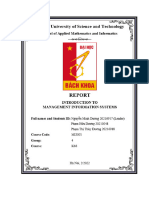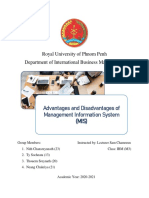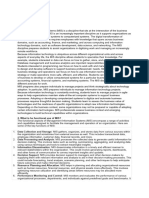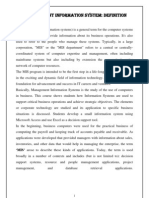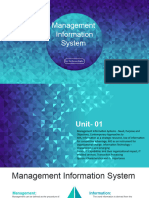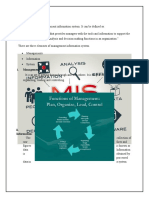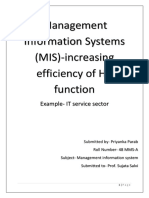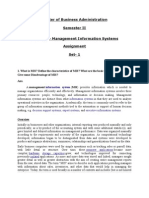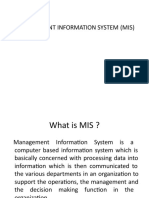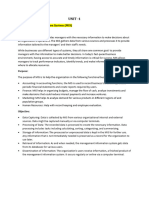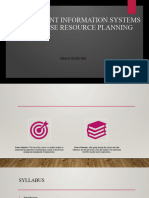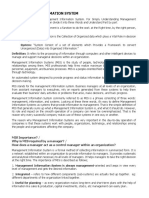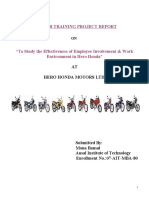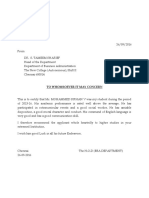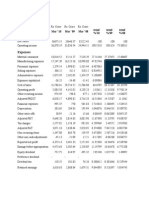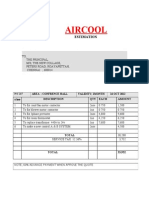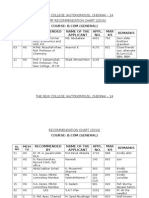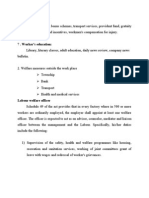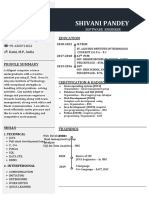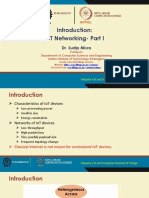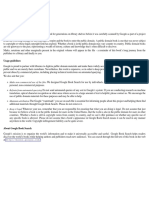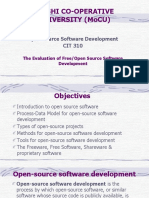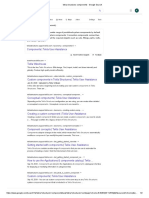0% found this document useful (0 votes)
437 views5 pagesStructure of Mis
MIS stands for Management Information System. It is a system that generates and provides information to management to help them make decisions. It has several key components: hardware to store data, software to process the data into usable information and reports, data as the raw information, and people at different authorization levels who access and use the system. An MIS collects data from various sources, processes it, and generates customized reports for different management levels to support decision making.
Uploaded by
Mohammed BilalCopyright
© © All Rights Reserved
We take content rights seriously. If you suspect this is your content, claim it here.
Available Formats
Download as DOC, PDF, TXT or read online on Scribd
0% found this document useful (0 votes)
437 views5 pagesStructure of Mis
MIS stands for Management Information System. It is a system that generates and provides information to management to help them make decisions. It has several key components: hardware to store data, software to process the data into usable information and reports, data as the raw information, and people at different authorization levels who access and use the system. An MIS collects data from various sources, processes it, and generates customized reports for different management levels to support decision making.
Uploaded by
Mohammed BilalCopyright
© © All Rights Reserved
We take content rights seriously. If you suspect this is your content, claim it here.
Available Formats
Download as DOC, PDF, TXT or read online on Scribd
/ 5




